



Today, the compilation of accurate data about customers and competitors is an indispensable tool for any organization. We understand that the process of conducting market research can often appear overwhelming, however, the dividends it yields are priceless. With that being said, here are five reasons why market research is a must for business success.
All too often, companies find themselves talking at consumers rather than to them. There’s a big difference. Market research is an invaluable and effective way to test concepts and key messages to evaluate those customers and prospects relate to best. With this information in hand, you can create content that resonates and determine how best to get that content to the people who matter.
Every company’s goal is to position itself uniquely in the marketplace in a way that puts them ahead of the competition. Quantitative and qualitative marketing research can be used to identify where your brand is positioned compared to your competitors, what metrics you should be tracking over time and what brand benefits matter most to your target market.
In today’s rapidly shifting market landscape, the ability to make effective data-driven decisions is crucial for all business operations. Having the right information at your fingertips can help you go forward with confidence, validating what you know to be true and minimizing the risk of getting it wrong.
One of the biggest returns you get from effective market research is that it compels you to actively listen and to engage with your customers on a personal level. This in turn enables you to more accurately assess their needs and identify potential holes in customer satisfaction so you can make necessary adjustments to better serve them. Significantly, when you can communicate at this level, it shows you not only know your customers and prospects but you also respect them, not wasting their time with incessant and unnecessary communications.
You may be familiar with the phrase “adapt or perish.” This can certainly apply to businesses and brands, as well as individuals. Conducting regular market research helps ensure that your brand stands the test of time, looking past short-term gain and evolving as necessary to survive and prosper.
In the modern global market, marketing research is not only useful but essential. Put it at the top of your marketing to-do list. Trust us, you’ll be glad you did.

As social and political issues overwhelm the media, companies are working harder than ever to cut through the clamor and grab the attention of their desired consumers. Interestingly, this cacophony has led to the liberation of graphic design. Visual marketing and advertising trends soaring in popularity are perhaps best characterized by a feeling of daring independence — strict structures are crumbling, wacky effects reign supreme and colors are flashier and louder than ever!. Graphic designers seem to have gone back to their roots as artists, experimenting and mutating previously worn-out practices.
Let’s explore some of these trends that, in some ways, are giving voice to the myriad emotions felt by many around the world.
Distorted effects
Think overlapping images, multiple light sources and “glitching” photos. Known as distorted effects, these design features are coloring everything from movie posters to retail advertisements. The result is a gritty image that can feel dark and somewhat ominous. However, when paired with bright colors it can exude a modern, edgy appeal.
Creative use of negative space
Even the use of negative space — the blank area surrounding an object — is being elevated in 2018. Negative space is often hailed as the most important part of an image, and traditionally it has been used to draw viewers to a focal point. However, graphic designers are once again flipping the script on this institution. Now, we’re seeing images merge with negative space to create a secondary feature that not only attracts the eye, but also inspires the imagination.
Broken, or cropped typography
Utilizing negative space has also proved popular in typography. It’s tough to erase parts of letters, or space them far apart and on multiple lines, while maintaining readability. When utilized correctly, however, the treatment can entice viewers to take a little more time and absorb the piece. The effect is futuristic and can be worth the risk when applied in the right context.
Bright colors and gradients
This year, muted colors are being shoved to the side by vibrant, bold palettes that shout for attention. We see this visual particularly being used in gradients, with colors gradually transforming and shifting into each other. Designers are also using this effect to incorporate various shapes and textures, creating an interesting visual that can benefit companies with a playful, lively brand personality.
Although these trends certainly won’t work for all businesses or industries, brands looking to garner attention can benefit by giving their designers freedom to break away from the traditional mold and draw outside the lines, both literally and figuratively. However, companies also need to evaluate the longevity of these trends and whether they fit with their mission, vision and values.
Are you contemplating a visual refresh? Give us a call and let’s talk.
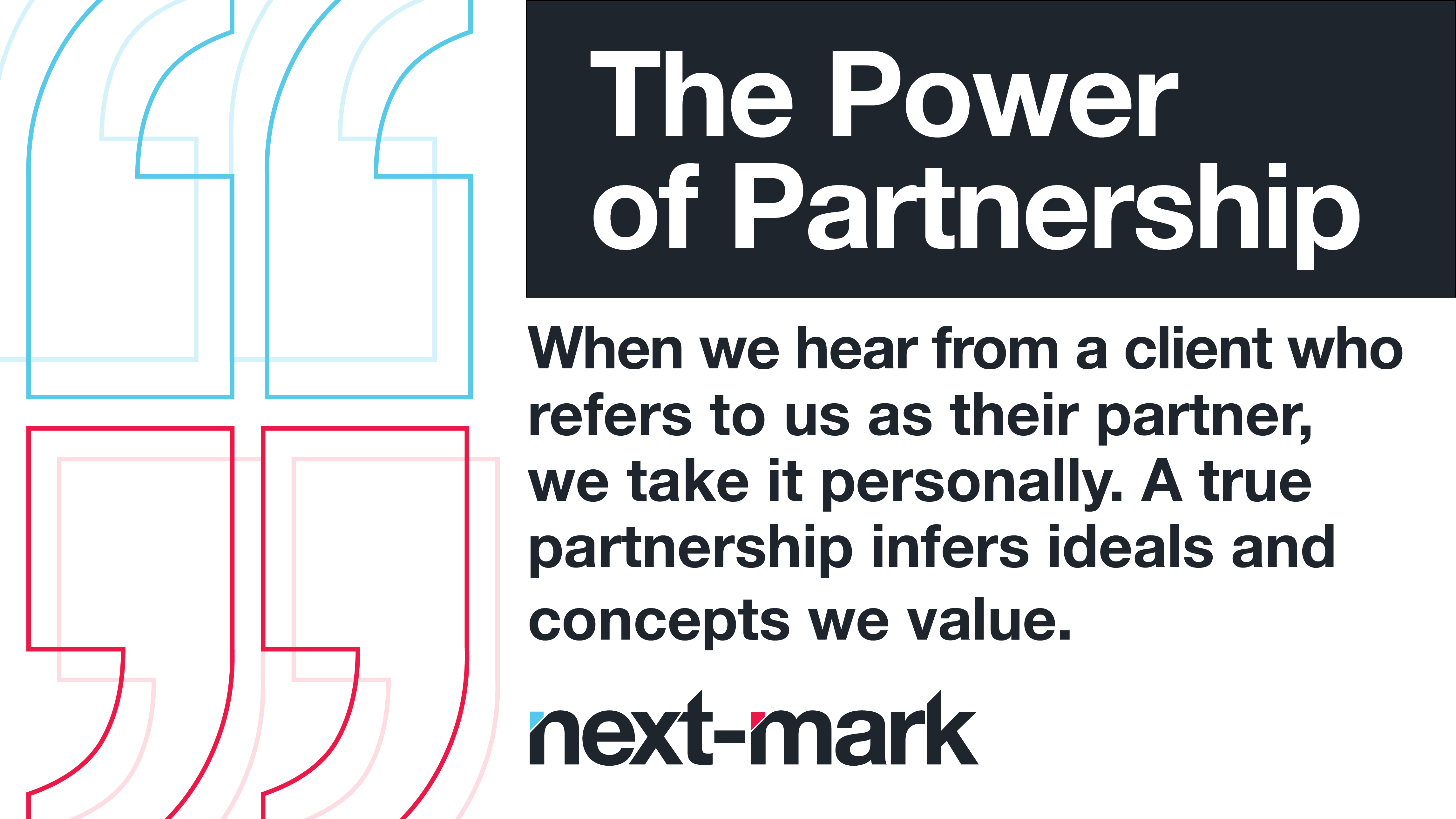
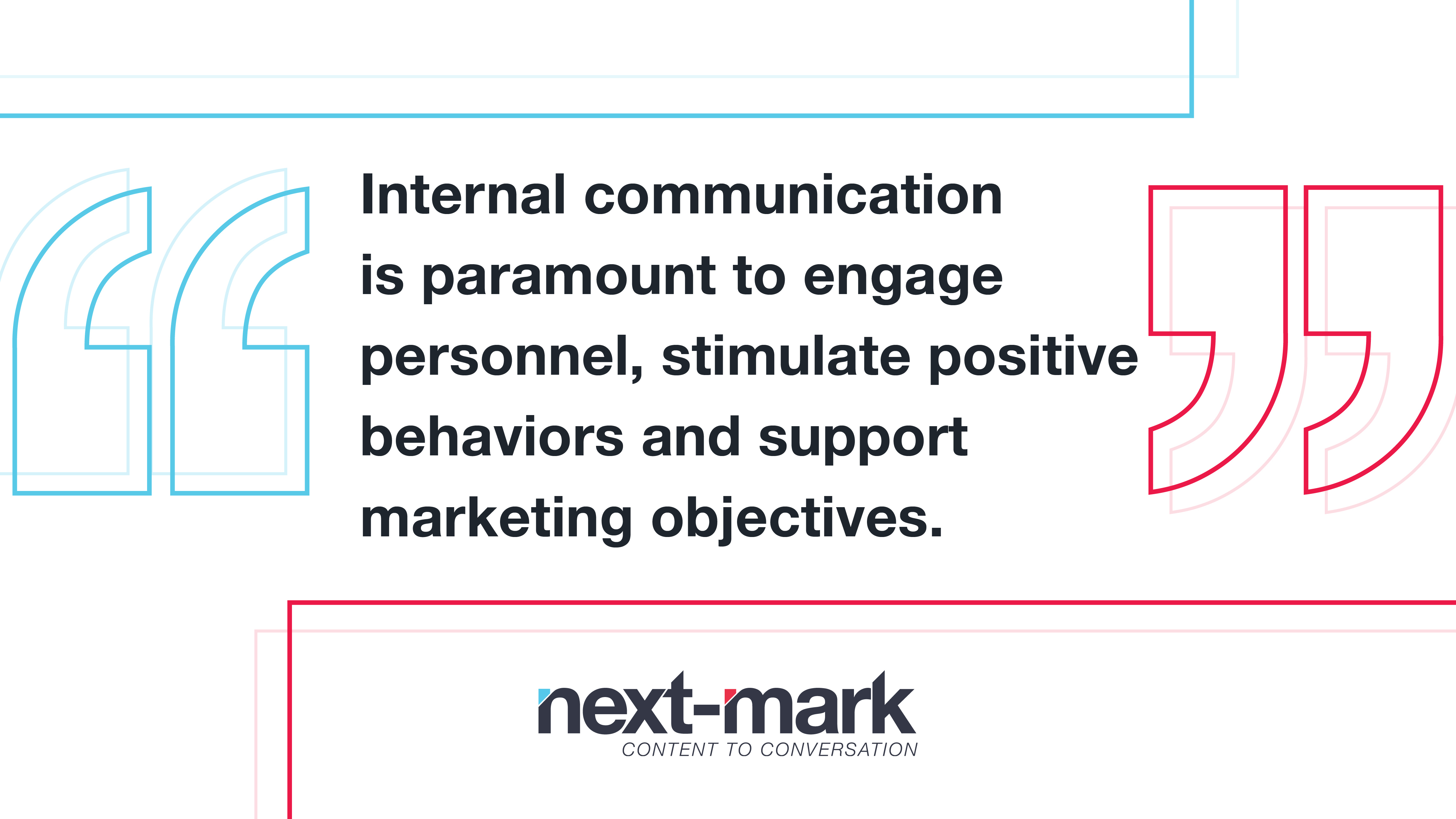
It’s easy to focus solely on external marketing — after all, businesses need to satisfy current customers and garner new clients to remain profitable. However, internal communication is paramount to engage personnel, stimulate positive behaviors and support marketing objectives with other audiences. Here are a few reasons why employee communication is more important than ever:
Aligns Messaging
Think of everyone who works for your company as an unofficial spokesperson; the knowledge they share can help fuel sales or improve experiences for customers. This is particularly important in large, service-oriented companies where employees of all levels continually interact with clients (think of a hospital or chain of coffee shops). When employees are informed and engaged, they are more likely to be positive brand ambassadors. They’ll speak highly of your organization, share exciting information with friends, families and customers, and help advance communications goals.
Retains Talent
The days of employees staying at one job for 20+ years are over. Millennials are the largest generation in the workforce and research shows that they are nearly three times more likely to switch companies than any other age group. Avoid costly turnover and boost retention with strategic internal communication efforts.
Here are a few ways to engage your employees, help them feel emotionally connected to their work and ensure they will stick around for the long run. As always, strategies and tools will vary depending on the size of your organization.
Garners Fresh Ideas and Perspectives
Use internal communication tools to invite feedback from your workforce. When you encourage employees to voice their opinions anonymously, you’re able to validate direction and use their responses as an important step in the research process. Whether you’re testing messaging, trying out a new website feature or deciding which topics to focus on in a publication, establishing a dialogue with your employees is a great way to encourage collaboration.
When executed strategically, internal communication can help advance organizational objectives and equip employees with the information they require to remain connected and devoted to your company. Do you need help launching an employee communications program? Let us help you get started!

What do you think of when you hear the phrase “graphic design”? Perhaps your favorite band’s album cover or an elaborate Coca-Cola ad comes to mind? The field of design is a vast realm of concepting, creating and composing visual stories that catch the viewer’s attention. When executed flawlessly, design is thought-provoking and action-inducing – ensuring a seamless transition from aesthetic identity to message strategy. Thus, the value of strategic design cannot be understated.
How is design strategic?
To marketing professionals and graphic designers, there is a distinction between something that is simply aesthetically appealing and a piece that elevates the company’s objectives. However, design is often seen as merely an aesthetic routine – make something look pretty and it will generate interest. How many times can you remember the general appearance of an advertisement, but you can’t recall which product or service it was highlighting? Design needs to do more than just look good. It has to support the company’s offerings, messaging, goals and identity. While it’s often challenging, companies need to separate themselves from their personal preferences and focus solely on strategy and the people they’re trying to reach.
When a company emphasizes strategic design, merging creativity with business objectives, the results are astounding. A study by the Design Management Institute showed that companies who emphasize the importance of visual marketing outperformed the S&P by 211%. Transforming design into a strategic tool is essential to differentiate brands from their competitors and drive customer decision-making.
What is the process?
Incorporating business strategy into the design process can take more time, but the payoff is exponential.
When design is paramount to business strategy and intertwined in messaging, objectives and market approach, it becomes a powerful tool. Companies who learn to develop a culture that sees design as more than simply an aesthetic medium will reap powerful results.
Is it time for you to re-evaluate the use of design in your marketing strategy? Call us and let’s get started.
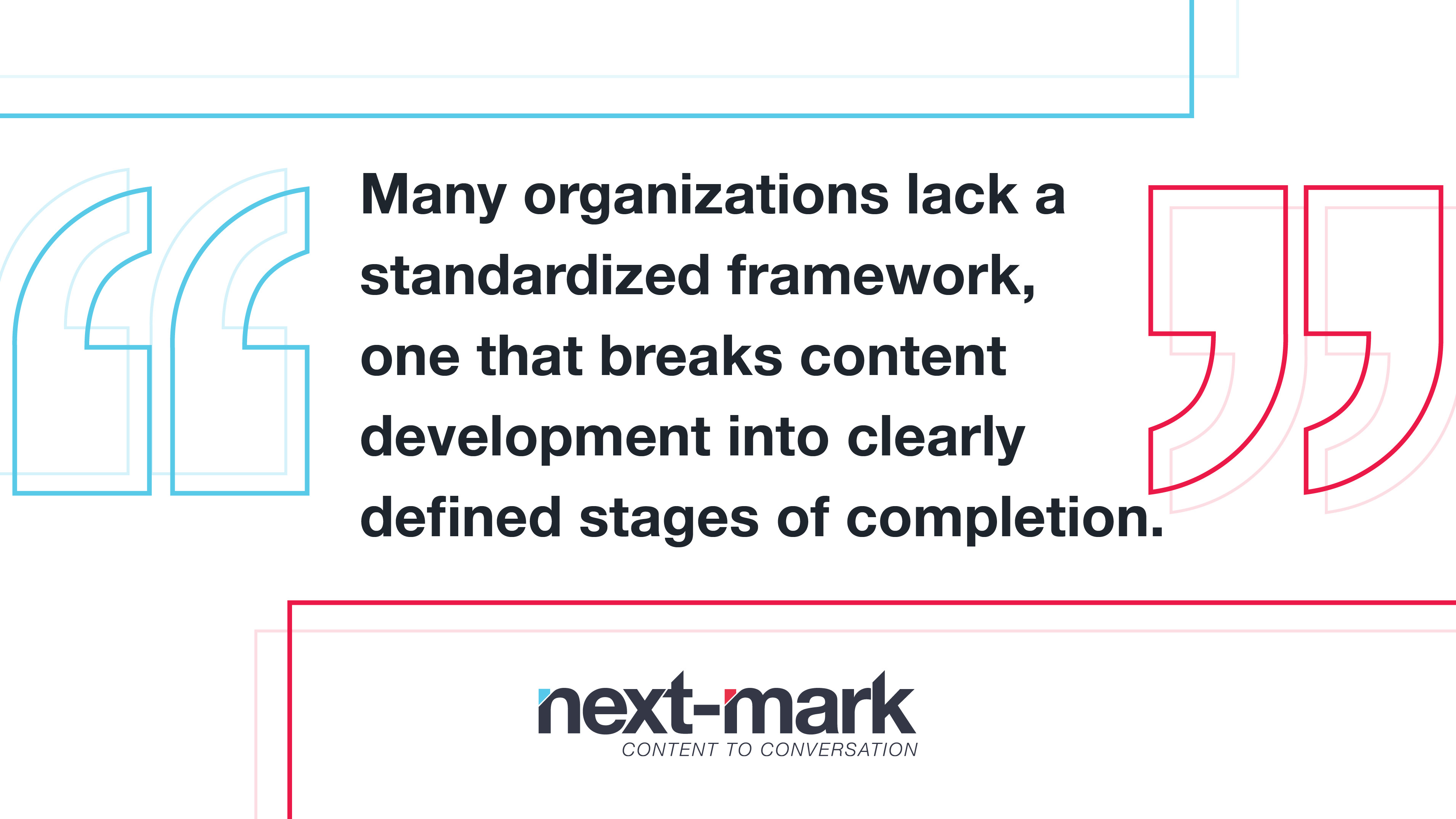
Providing valuable, digestible content to consumers in order to build brand affinity is hardly a new marketing device, so why are some marketers struggling to craft killer content and effective creative assets?
While it may differ from marketer to marketer, one of the key problems we see is related to organization and planning. Part of the problem lies in the fact that many organizations lack a standardized framework, one that breaks content development into clearly defined stages of completion.
Thus, below we have outlined five important steps every marketer should take when developing a new piece of content.
Crucial for the beginning of a new project, especially if there are multiple parties involved, a clearly organized creative brief is quintessential to the success of every new content project. Not only does it ensure everyone is on the same page, but once approved this then will become a working document that provides guidance to all parties on the overall communications objective of the asset being developed.
Once you have a creative brief that is approved by all parties, you can then provide a copy outline to include an overview by section with bullets along with other salient points, fact-based items and other content that should be included.
After a copy outline is developed, a working draft is then completed, and sent to internal or external reviewers for feedback. This draft might include multiple options for headlines, copy points and the overall content layout direction.
Any good content marketer knows that editing is a critical part of the process. Thus, once you have feedback on the working draft, it is important to then to work with the client through a few rounds of edits (we recommend no more than three) until approval is reached.
If you are adding graphic elements to the content asset, this is the last step. Once the approved draft is in design, we recommend then smoothing out the overall copy in a design context for flow and fit within the designed asset.
Need help with your content strategy? We would love to assist. Give us a call at 941.929.3104 or visit our website.

In the ever-evolving design industry, the distinction between website programmers and graphic designers is slowly becoming increasingly hazy. While classically trained designers such as myself may not be expected to crank out a website design in between developing collateral and guiding brand direction, the need to expand our base of knowledge has become imperative if we want to remain relevant.
Understanding the foundational principles of web design will help you collaborate more seamlessly with programmers and create stunning, user-friendly online spaces. Read on for some advice about working with developers and getting started in the coding world.
Learn the basics of HTML, CSS and Javascript
Getting your hands dirty in the world of programming is the most important tip I can provide. A foundational knowledge of programming can work wonders as well as save significant time when collaborating with a seasoned web developer. You’ll also more thoroughly understand how websites function and can then tailor your design accordingly. There are plenty of free or inexpensive coding tutorials on sites like Lynda.com, Codecademy and even YouTube. The information and applications are readily available; it’s up to you to take the first step.
Learn to communicate with programmers
Programmers and designers speak different “languages” when constructing a website. Programmers typically speak in terms of the coding and rules/guidelines in which a website is governed, while designers on the other hand, usually speak in terms of aesthetics. In order for ideas and direction to be conveyed between the two, there needs to be a clear understanding of the other’s language. The World Wide Web Consortium (W3C) is the main international standards organization for the World Wide Web and offers technical specifications and guidelines. Familiarize yourself with these web standards and you’ll be able to give, and take, direction more effectively.
Monitor and research current website trends
Website design changes quickly and constantly. What may have been trendy a few years ago might look dated and perhaps even ridiculous now. Remember those website backgrounds with flying toasters from the early-to-mid 90s? Or the glittery social media graphics from the early 2000s? A simple Google search of current website design trends will offer information about what is currently popular and perhaps spark some inspiration for the website you’re designing. But make sure you always prioritize functionality; if users can’t find what they’re looking for quickly and easily, even the most beautifully designed website will lose valuable traffic.
Work with programmers directly
Communication is key for most professions and design is one of them. When you’re in the midst of website creation, speaking directly to a programmer can save time and spare you of some of the frustration from the process. A website is never designed and programmed exactly the way it should be on the first go. The bulk of website development involves a lot of back and forth, as designers often need to edit and tweak the design to fit within certain website guidelines. If you’re working with an account manager or client, explain that this direct communication is vital for project efficiency. They’re sure to understand and connect the two of you.
Research thoroughly when choosing a partner
When possible, research potential development companies before launching a project. Development companies vary dramatically in size and pricing, and consequently can alter the timeline of the proposed website launch as well as associated costs. Some companies charge by the project while others charge by the hour. Some are single person shops while others have large teams. You should also be fully aware of the company’s locations and the consequential time zone differences. Having worked with both local and international programmers, I can say that time zones can dramatically affect the entire process of website development. If you work with programmers on the other side of the world, you will run into roadblocks due to work schedules. Before you commit, gather as much information about the company as possible.
Creating a website is a complicated and lengthy process, but one that is highly fulfilling; there’s something special about carving out an entirely new space in the online world. Equip yourself with the correct knowledge and tools, and you’re on the path to becoming a great design partner.
On the other hand, if you don’t have the time or resources to create a website — let us do it for you! Contact us to get started.
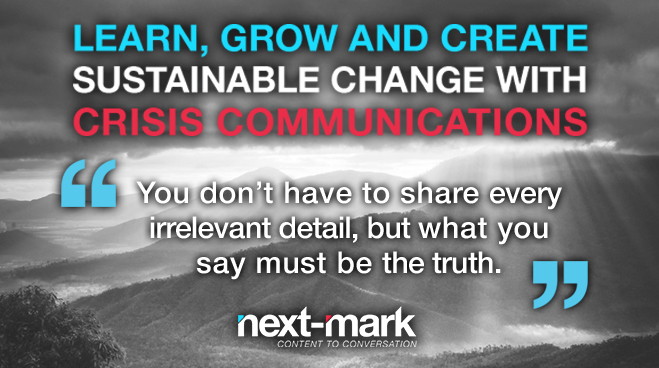
Your company is suddenly mired in a negative situation with potentially serious repercussions. While a chill grasps your heart, a slew of questions assault your brain. What’s your first step? Who are the decision makers? When and how should you respond to the media? Who should do it? Then what?
Most organizations likely will be confronted with some sort of a crisis communications challenge, whether internally or externally. With thorough preparation and an efficient response, however, you will be able to shape the appropriate, successfully navigate challenging times and maybe even come out the better for it.
Following are some core principles of crisis communications. The biggest takeaway, however, is this: Be prepared. That is, don’t wait for a disaster to strike. Look deep into the organization, acknowledge vulnerabilities and honestly confront them. Time-consuming? Yes. Painful? Most certainly? Necessary? Absolutely.
C – Choose the Right Tools
While the resources you employ will differ with each situation, make sure you always have: a core team of leaders to vet strategies, share insight and provide approvals; established communications channels and methods through which you’ll relay messages to internal and/or external audiences; and a messaging document approved by leadership and stakeholders. Other tools, such as support resources for staff, can be added as necessitated by the crisis.
R – Reveal the Facts
Before you act, you need to assess the particular situation to fully understand the crisis at hand. Knowledge is power, and gathering intelligence is crucial to your success. Fully understanding the facts, the players involved and any outside influences will help you objectively create meaningful conversation and collaboration. Once the facts are gathered, you’ll need to develop a communications strategy to address the issue in a timely manner.
I – Instill Trust and Tell the Truth
Demonstrating your ability to objectively listen and make informed decisions in a crisis communications situation will develop trust, both within your organization and with the public. If you respect each internal and external stakeholder’s position and perception of the situation, you are more likely to resolve the issue in an expedient and proficient manner. This also will ensure that you address all concerns and offer timely, effective and valid solutions that will cultivate sustainable results.
You don’t have to share every irrelevant detail, but what you say must be the truth. If you don’t know what that truth is yet, say so. Don’t guess. There’s usually no going back once you’ve said the wrong thing – intentionally or unintentionally.
S – Streamline Processes
Crises easily can get worse, so you’ll need to act fast. Make sure every step of your reaction plan is concise, clear and detailed. Each person involved should be aware of his or her responsibilities, the actions they need to take, to whom they will report and whom they should or shouldn’t contact. Checklists are an efficient way to keep team members on track. Craft your media responses in advance, even if the chance of reporter inquiries is small; if the issue does make it into the spotlight, you’ll be able to respond quickly and consistently.
I – Institute Change
Your job isn’t over when the media moves on to the next story. Crises test core organizational responses, procedures and culture, and it’s a communicator’s job to help drive transformational growth. Debrief after the event to address and identify issues that emerged. Consider alternative scenarios and establish effective action plans that address weaknesses.
S – Sustain Confidence
As an organization, it’s important to follow through on promises made during a crisis. Committing to needed change and effectively communicating it to the audiences involved can instill trust and restore confidence in your company.
There is so much more involved, of course, and so many specifics among the generalities.
Preparing for, and learning from, crisis communications situations benefit us as professional communicators, leaders and team members in any organization. Though crises always will impose an element of chaos, preparation and a solid communications plan provide the anchor you need to make the right decisions and create the groundwork to sustain the conversation and continuously grow.
Contact us for additional insight into how your organization can successfully and effectively manage crisis situations.
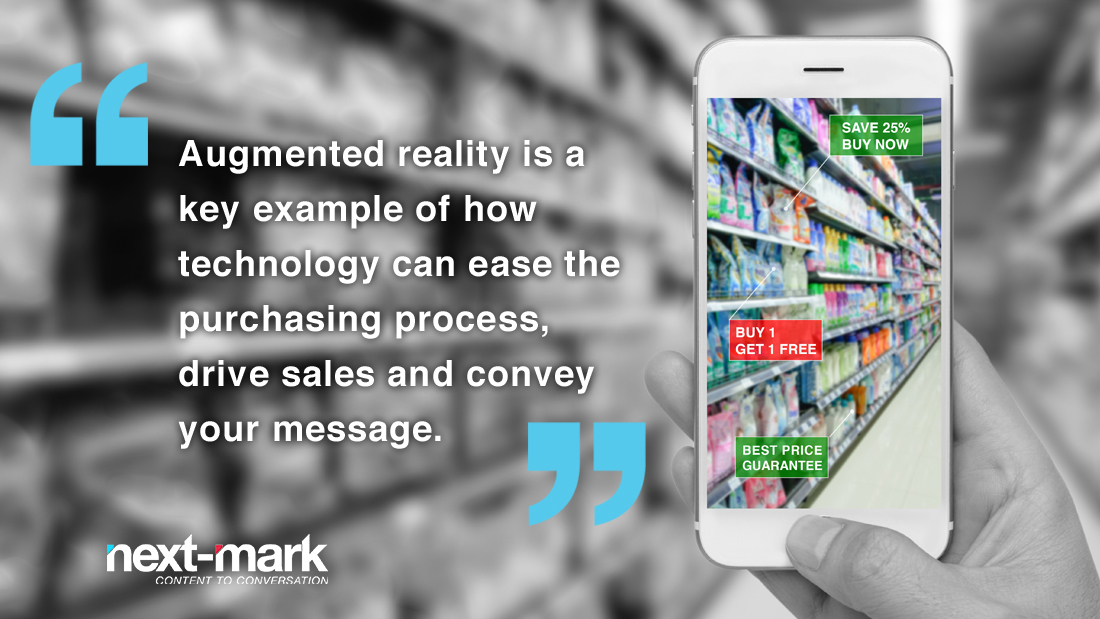
What if your ideal consumer was able to interact with your product, marketing material and content – all in real time? Augmented reality is enhancing customer interaction in ways that have proven to be both effective and lucrative.
Let’s explore the fundamentals of AR and how it can be used to bolster digital marketing and communications.
AR vs. VR
While virtual reality diverts us from our world, augmented reality digitally enhances it. Users enter the realm of VR by wearing a video headset equipped with technology that creates a computer-generated simulation. While immersed in VR, you can explore space, float above the New York skyline, become a soldier on a battlefield and experience thousands of other scenarios — all from the comfort of your home. (Read our recent blog to learn how companies are engaging consumers with VR).
Augmented reality, on the other hand, integrates or “layers” digital enhancements on top of the user’s real world experiences. It is considered more accessible to the average consumer, as it can be accessed via smart phones, tablets and laptops.
Implementation and application
Not surprisingly, many companies realize the potential of this technology and have since incorporated it into their marketing strategies. Pepsi Max won awards for its creative implementation of augmented reality in its Unbelievable #LiveForNow campaign, which turned a tedious bus stop into a visual adventure. Space ships appeared in the London sky, creatures smashed through the sidewalk and a tiger plodded toward onlookers. While users may not have been fooled by the stunts, they were certainly impressed and entertained. The campaign has garnered national acclaim, generating nearly 8 million views on YouTube and thousands of social media comments, shares and engagements.
Ikea has also integrated augmented reality into their customer experience. The Ikea Place app enables furniture to virtually appear in a person’s own home, giving them a preview of how the piece would look in their space before purchasing it. This foray into augmented reality is a key example of how technology can be used to ease the purchasing process and drive sales. Ikea recognized an age-old problem with furniture buying and thus provided a truly innovative solution.
Looking to the future
When executed effectively, augmented reality is a breath of fresh air for consumers inundated with print and digital advertisements. Rather than simply delivering a message, AR gives companies the opportunity to simplify processes, solve common problems and directly engage customers with their products. Customers also benefit from this exchange. Imagine virtually trying on clothes or testing a popular shade of lipstick, without having to step foot into a store. As the technology continues to develop and companies adapt to the expanded digital environment, expect the bridge between the digital world and the “real” world to magnify.
Looking for innovative marketing solutions? Give us a call and prepare for powerful results.